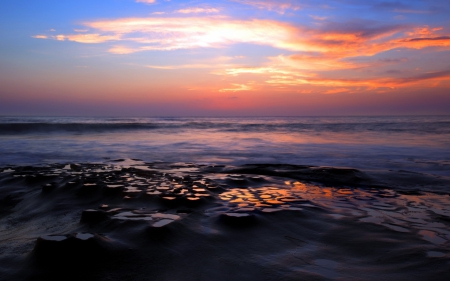(单词翻译:单击)
听力文本
This is Scientific American — 60-Second Science. I'm Christopher Intagliata.
Every spring, the Mississippi River dumps tens of thousands of tons of nutrient runoff into the Gulf of Mexico. Add temperature, current and wind to that pollution, and you have the Western Hemisphere's largest stretch of oxygen-poor waters—a so-called "dead zone."
That dead zone hits the Gulf's famed—and financially important—brown shrimp fisheries. And it does two things: first, the low oxygen slows down the shrimps' growth.
"The other thing that happens is what I like to call the burning building effect." Martin Smith, an environmental economist at Duke University. "The shrimp try to avoid the low oxygen so they swim out of these areas of depleted oxygen. As a result they end up kind of aggregating on the edges. They kind of line up when they get outside the deoxygenated waters. And that's why I call it the burning building effect. If you're in a burning building you're running to get out of the fire, you don't keep running when you get outside, you stop and you take a breath."

Fishermen flock to where those shrimp "take a breath." And shrimp get caught earlier in the season. So combine these two effects—slower growth and earlier catches—and the result is a haul of more small shrimp, and fewer large and jumbo shrimp. Meaning the price on big shrimp temporarily goes up. Supply and demand, right?
Smith and his team studied that link—between the dead zone and a spike in large shrimp prices—using 20 years of shrimp pricing data. Their analysis is in the Proceedings of the National Academy of Sciences.
The brown shrimp fishery in the Gulf was once the most valuable in the U.S. Now, Smith says, we can measure the true cost of that nutrient runoff. "We can start to ask questions like, how much does the shrimp industry lose as a result of this problem, and how does that compare to what it would cost to control nutrient flows coming from food production upstream in the Mississippi watershed?" In other words—whether there might be some net economic benefit to keeping the water environmentally protected.
Thanks for listening for Scientific American — 60-Second Science Science. I'm Christopher Intagliata.
参考译文
这里是科学美国人——60秒科学。我是克里斯托弗·因塔利亚塔。
每年春天,成千上万吨来自密西西比河的营养径流注入墨西哥湾。加上温度气流和风力对污染的影响,就形成了西半球最大面积的缺氧水域——即所谓的“死亡地带”。
死亡地带对墨西哥湾闻名世界且具有重要经济地位的褐虾捕捞业造成了重创。主要产生了两种影响:第一,低氧延缓了虾的生长速度。
“我想将另一种影响称之为燃烧建筑效应。”马丁·史密斯是杜克大学的环境经济学家。“虾想要试图摆脱低氧环境,就会游离这些氧气枯竭的地方。最终它们都会聚集到边缘地区。这些虾会在脱氧水域外围排起长队。所以我称之为‘燃烧建筑效应'。如果你身处一座着火的大楼中,你会努力逃离火海,而当你逃出大楼以后,你不会继续逃生,而是会停下来喘口气。”
渔民们会涌向虾“喘口气”的地方。所以,在捕虾期到来之前许多虾已经被捕捞走。生长期减慢和捕捞提前这两种影响结合在一起,会导致捕捞上来的小虾越来越多,而大虾的数量越来越少。这就意味着大虾的价格会暂时上涨。这是市场供需关系,对吗?
史密斯和他的团队通过20年的虾价数据,对死亡地带和大虾价格飙升的关系进行了研究。该研究结果发表在《美国国家科学院院刊》上。
墨西哥湾的褐虾捕捞业曾是美国最具价值的产业。史密斯表示,现在我们可以衡量营养径流造成的真正损失了。“我们可以问,营养径流会给捕虾业造成多少损失?营养流来自密西西比河流域的食品生产上流,那上述损失与控制营养流的成本相比呢?”换而言之,保护水环境是否有净经济效益?
谢谢大家收听科学美国人——60秒科学。我是克里斯托弗·因塔利亚塔。
译文为可可英语翻译,未经授权请勿转载!
重点讲解
重点讲解:
1. slow down (使)放慢;(使)减速;
例句:Lack of demand will slow down our ecomonic growth.
缺少市场需求就会减慢我们的经济增长速度。
2. end up 最终;
例句:If you do that,you'll end up with egg on your face.
你要是做那件事,必将以耻辱告终。
3. line up (使)(某一批人)排成行;(使)列队;
例句:They quickly lined up in the playground.
他们很快在操场上排好了队。
4. in other words 换言之;换句话说;也就是说;
例句:In other words, the balance of trade may deteriorate rather than improve.
换句话说,国际贸易差额不但不会改善,反而可能会恶化。


